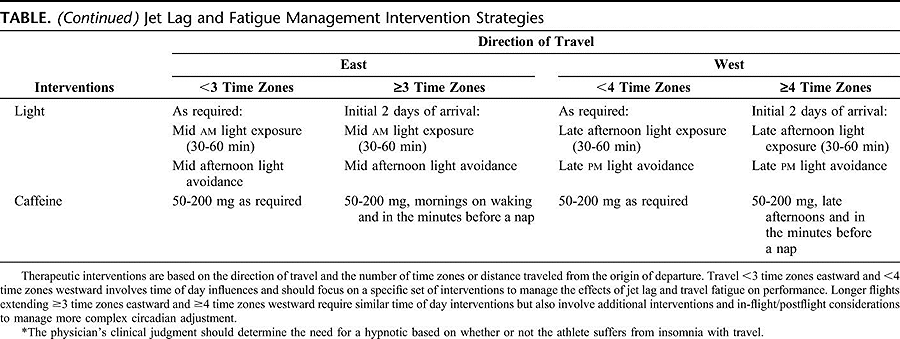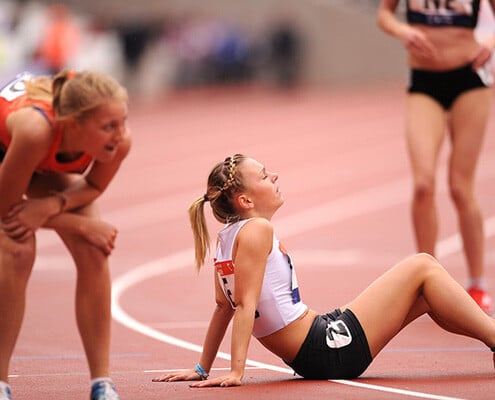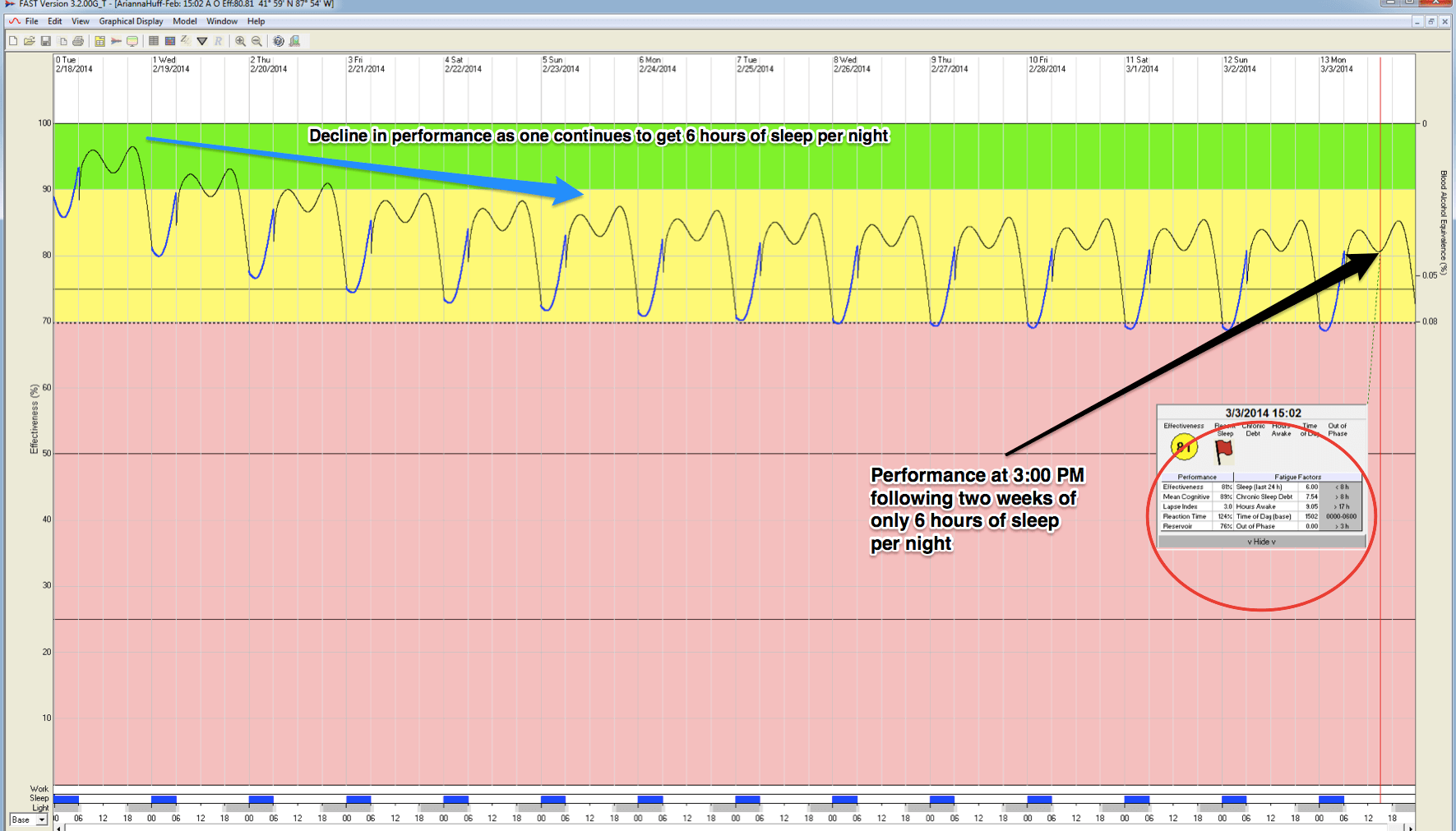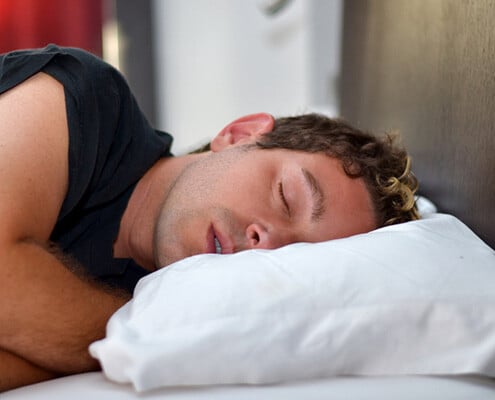In an effort to reduce fatigue and minimize the effects of jet lag, The Union of Sports Ministry in India recently made the decision to send their athletes to Rio for the 2016 Olympics a full month before the Games. In previous Olympic games, athletes were arriving as close to 2 days before their scheduled events. This focus on body-clock synchronization speaks to the effects of jet lag on athletic performance.
In Part 1 of this three part series, we focused on defining jet lag, the exact mechanisms involved, and how it affects an athlete’s performance. This post will explore some of the most effective intervention techniques designed and proven to help cope with jet lag.
Light exposure
One of the factors that should be the most closely monitored is an athlete’s exposure to light when traveling through different time zones. In humans, light is strongly linked with an alert or wakeful state, and it acts as the most potent circadian phase shifter (Cajochen, 2007).
There are two different types of phase shifts – phase advance (moving everything earlier in the body-clock’s day), and phase delay (moving everything later in the body-clock’s day). As you can see in the table below, an athlete’s exposure to light will depend on what direction they’re traveling, and how many time zones they’re crossing.
When an athlete travels from west to east, their body is going through a phase advance – which means they need to shift to an earlier time zone. In this case, the athlete should be exposed to more light in the morning and less light in the afternoon. When traveling from east to west, the body is going through a phase delay and shifting to a later time zone. Conversely, light should be minimized in the morning and maximized in the afternoon.
There are several strategies for increasing and decreasing light exposure during long trips: Seasonal Affective Disorder light devices (450-480nm) at approximately 1500 lux are perfect for maximizing light exposure, and light-blocking glasses that have been created to block between 80% and 98% of incident light in the blue range work to minimize light exposure (Samuels, 2012). Ideally these interventions should be implemented 2-3 days before the time-zone shift.

Melatonin
The effects of melatonin on athletes traveling through multiple time-zones is well-studied, and it has been proven to have a mitigating effect on jet lag symptoms (Manfredini, et al 1998). Melatonin is a hormone that is known as a chronobiotic drug, or a drug that specifically affects an aspect of one’s biological time structure. Produced by the pineal gland during darkness (and therefore usually at night), melatonin is responsible for the synchronization of the circadian rhythms.
Several studies have demonstrated the efficacy of well-timed, low dose of melatonin to overcome the symptoms of jet lag (Cardinali et al. 2002, Manfredini et al. 1998, Parry 2002). Most experts agree that <1 mg is sufficient to shift human rhythms (any more seems to have a lethargic effect – not something you want to induce in high-level athletes). The general rule is evening administration advances one’s body clock (induces sleepiness) and morning administration delays it (helps keep you awake). Using melatonin to fight jet lag works best if it is consumed 30 minutes before/after the athlete’s normal sleep/wake cycle, and taken at least three days after the time-zone shift (Samuels, 2012).
Caffeine
Just as melatonin is used to help induce an athlete’s natural sleep rhythms, caffeine is used to help an athlete maintain alertness when their body’s clock is telling them it’s time to sleep. In a study by Dr. Beaumont titled Caffeine or melatonin effects on sleep and sleepiness after rapid eastward transmeridian travel (2004), it was found that slow-release caffeine reduced sleepiness for a few days after travel and helped alleviate symptoms of eastbound jet lag.
The recommended dose of caffeine is 100-300mg every four hours, and should not to be taken too close to the destination bedtime (Caldwell, 2015). Some of the most effective sources of caffeine are: NoDoz© (100-200mg caffeine), home-brewed coffee (100 mg per cup), Red Bull© (83 mg per can), 5-Hour Energy© (215 mg per bottle) and Coca Cola© (34 mg per can). See Table 1 for the recommended dose of caffeine depending on the direction of travel and the number of time-zones crossed.
Ambien
The final pharmacological intervention used to fight jet lag is Ambien. The recommended dose of Ambien (10mg) taken right before the standard local bedtime, can help athletes fall asleep when their internal body clock is telling them to remain awake. This sleep medication is short acting, produces no side-effects, and can be used during the first 2-3 days in a new time zone (Caldwell, 2015). Athletes should always consult a medical professional when deciding if Ambien is right for them or not.
As with other sports performance techniques, the modification and scheduling of these intervention techniques should be tailored to the athlete’s lifestyle, body composition, reactivity to stimulants, and medical history. Though the symptoms of jet-lag are unavoidable, using integrative and personalized intervention techniques can significantly help athletes cope with the unwanted effects.
In Part 3 of this series we’ll talk about some important strategies for time-zone shifting. Stay tuned.
References
Cardinali D, Bortman P, Liotta G, Lloret S, Albornoz L, Cutrera R, Batista J, Gallo P (2002) A multifactorial approach employing melatonin to accelerate resynchronization of sleep-wake cycle after a 12 time-zone westerly transmeridian flight in elite soccer athletes.
Manfredini R, Manfredini F, Conconi F (2000) Standard Melatonin Intake and Circadian Rhythms of Elite Athletes after a Transmeridian Flight.
Manfredini R, Manfredini F, Fersini C, Conconi F (1988) Circadian rhythms, athletic performance, and jet lag.
Parry B (2002) Jet Lag: minimizing it’s effects with critically timed bright light and melatonin administration.
Samuels C.H. (2012) Jet Lag and Travel Fatigue: A Comprehensive Management Plan for Sport Medicine Physicians and High-Performance Support Teams.



